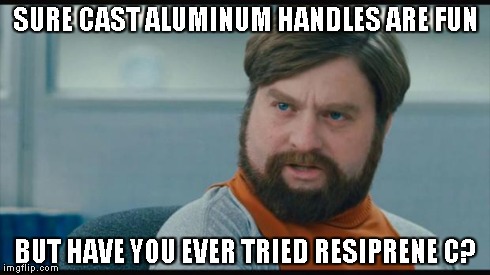- Joined
- Feb 24, 2011
- Messages
- 4,423
Aluminum handled knives are niche with today's technological advances in design and material construction. Handle construction should not play a role in the structural integrity of the knife, unless it was designed to be that way. IMO, designing a knife's handles to be a structural component is a weak attempt at cutting corners.
Definitely agree with that.
I think my mother still has a bunch of those Rada kitchen knives in the kitchen; they've endured over 32 years of use and neglect...
Sort of on topic; I just got this custom axe (bottom one) yesterday it has a T6061 aluminum handle with 1/2 thick A2 tool steel bit held on with grade 8 bolts. The maker claimed having using it pretty roughly and it held up fine. It was then refurbished for sale as a user so I got a great deal. I'm looking forward to seeing how it holds up to use. :thumbup::thumbup::thumbup:







